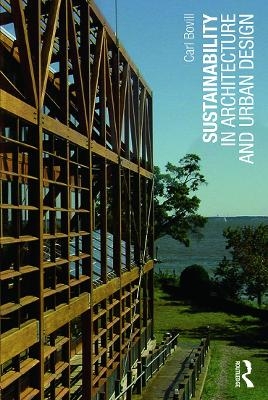
Sustainability in Architecture and Urban Design
Routledge (Verlag)
978-0-415-72495-1 (ISBN)
You'll learn:
-About environmental economics
-How sustainable architectural design relates to ecology
-How fractal geometry can lead to a new understanding of the structure of the world around us
-How to design energy efficient houses and commercial buildings
-How to design and live in our cities to lower energy use per person
-About LEED points at all scales
A glossary and reading lists encourage you to explore the topics further.
Carl Bovill is an associate professor in the School of Architecture, Planning, and Preservation at the University of Maryland where he teaches materials, environmental controls, and sustainability. His publications include Architectural Design, Integration of Structural and Environmental Control Systems (1991) and Fractal Geometry in Architecture and Design (1996).
Preface. Introduction. Part 1: The Global Sustainability Problem 1. Solar Energy Use through Time 2. Uncontrolled Growth 3. The Ecological Footprint 4. Global Warming and Climate Change Part 2: Ecology and the Environment 5. Ecosystem Example: The Chesapeake Bay 6. Ecology and Architecture 7. Environmental Economics 8. Nature's Geometry Part 3: The Residential Scale 9. Building Example: Watershed House 10. LEED For Residential Building Points 11. The Energy Design Process 12. Bioclimatic Design 13. Solar Control and Shading 14. Passive Solar Heating 15. Passive Cooling 16. Embodied Energy and Thermal Mass 17. High Insulation Levels 18. Material Choices Part 4: The Commercial Scale 19. Building Example: The Chesapeake Bay Foundation Building 20. LEED For Commercial Buildings 21. Daylighting 22. Electric Lighting 23. Heating and Cooling 24. Indoor Air Quality 25. Green Roofs 26. Material Choices Part 5: The Urban Scale 27. Urban Example: San Francisco 28. LEED For Neighborhood Development 29. Urbanism 30. Transit Oriented Development Part 6: Energy Sources 31. Conventional Fuels: Coal, Oil, and Natural Gas 32. Alternative Energy Sources. Appendix A Sun Path Diagrams. Appendix B Energy Analysis Computer Programs. Bibliography. Index
| Erscheint lt. Verlag | 10.12.2014 |
|---|---|
| Zusatzinfo | 6 Tables, black and white; 177 Illustrations, black and white |
| Verlagsort | London |
| Sprache | englisch |
| Maße | 156 x 234 mm |
| Gewicht | 1000 g |
| Themenwelt | Naturwissenschaften ► Biologie ► Ökologie / Naturschutz |
| Technik ► Architektur | |
| Technik ► Bauwesen | |
| Technik ► Elektrotechnik / Energietechnik | |
| ISBN-10 | 0-415-72495-3 / 0415724953 |
| ISBN-13 | 978-0-415-72495-1 / 9780415724951 |
| Zustand | Neuware |
| Haben Sie eine Frage zum Produkt? |
aus dem Bereich


